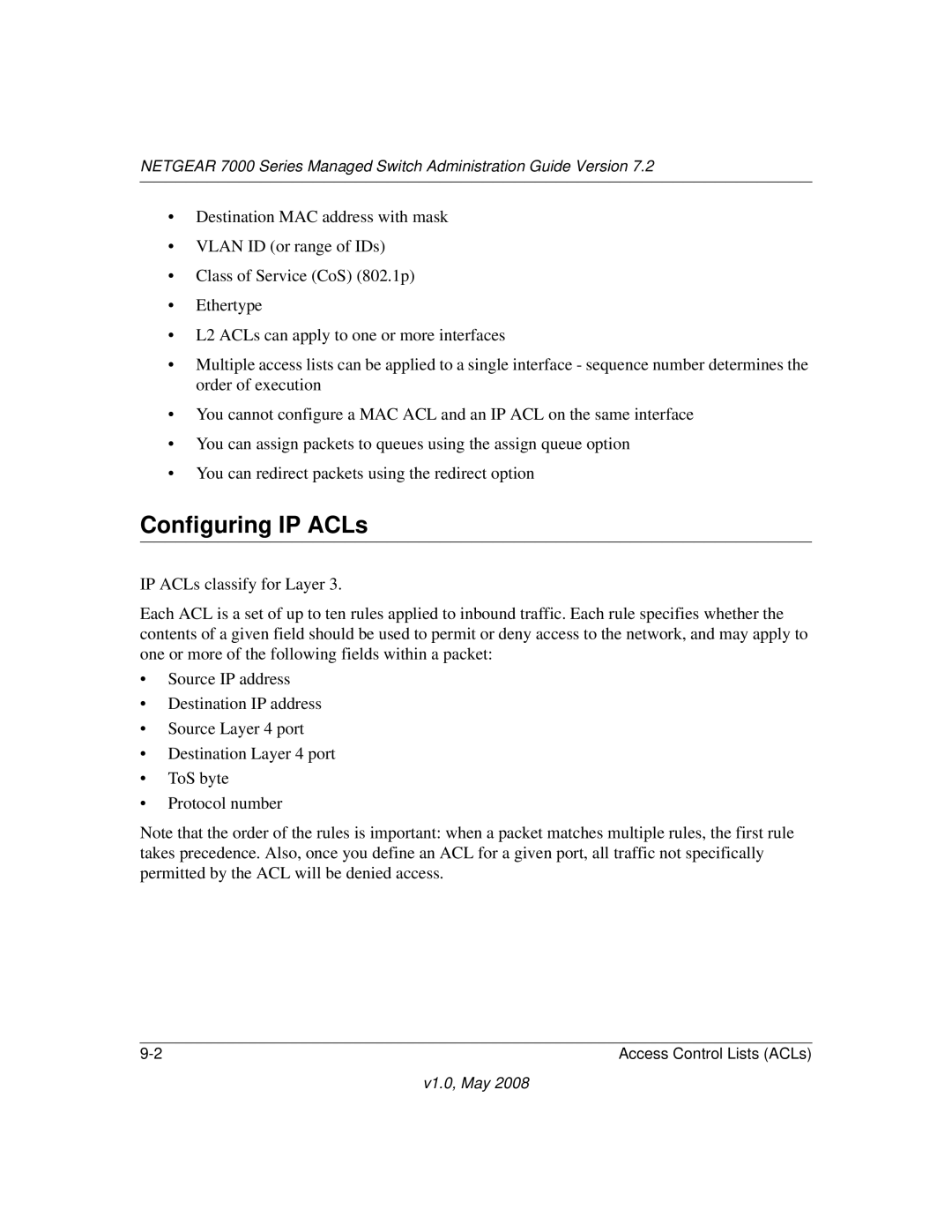
NETGEAR 7000 Series Managed Switch Administration Guide Version 7.2
•Destination MAC address with mask
•VLAN ID (or range of IDs)
•Class of Service (CoS) (802.1p)
•Ethertype
•L2 ACLs can apply to one or more interfaces
•Multiple access lists can be applied to a single interface - sequence number determines the order of execution
•You cannot configure a MAC ACL and an IP ACL on the same interface
•You can assign packets to queues using the assign queue option
•You can redirect packets using the redirect option
Configuring IP ACLs
IP ACLs classify for Layer 3.
Each ACL is a set of up to ten rules applied to inbound traffic. Each rule specifies whether the contents of a given field should be used to permit or deny access to the network, and may apply to one or more of the following fields within a packet:
•Source IP address
•Destination IP address
•Source Layer 4 port
•Destination Layer 4 port
•ToS byte
•Protocol number
Note that the order of the rules is important: when a packet matches multiple rules, the first rule takes precedence. Also, once you define an ACL for a given port, all traffic not specifically permitted by the ACL will be denied access.
Access Control Lists (ACLs) |
